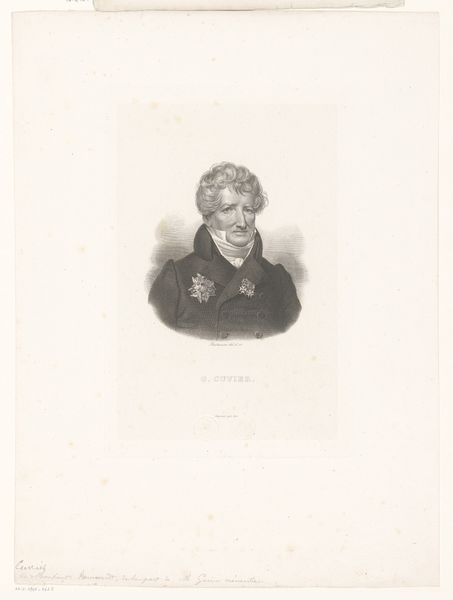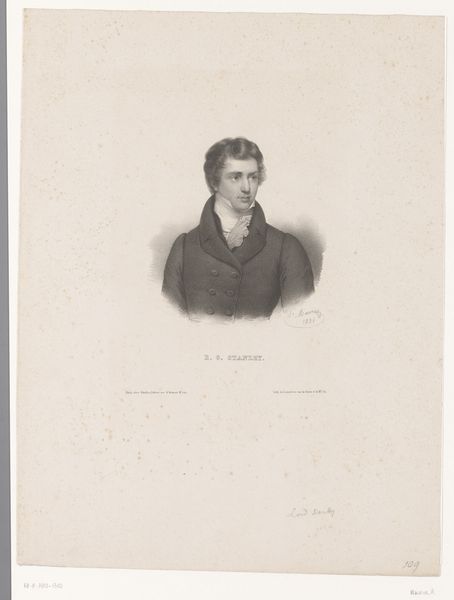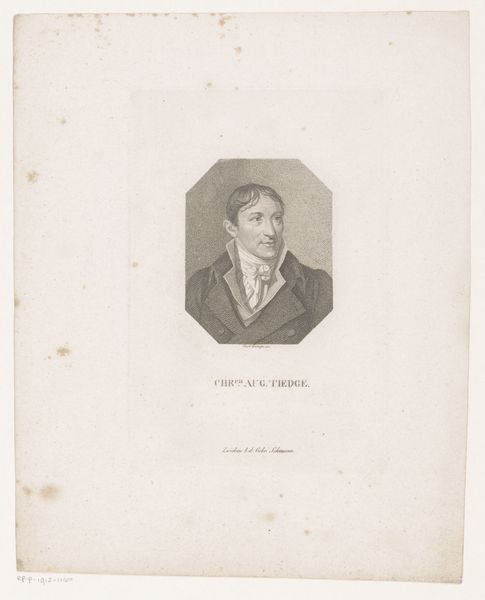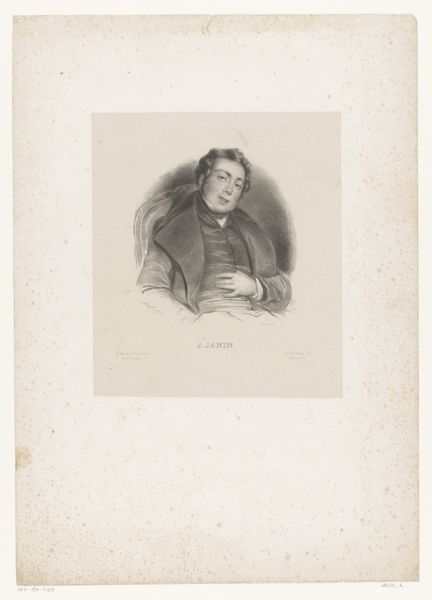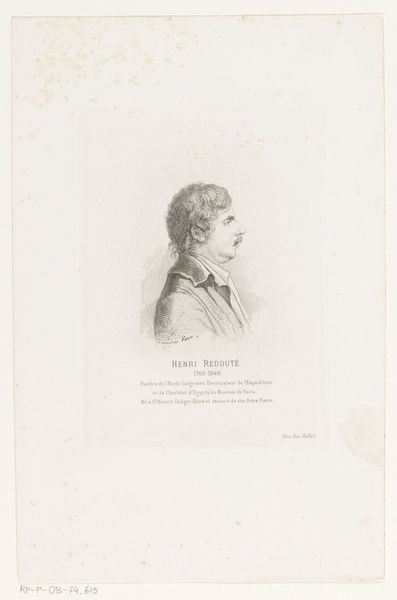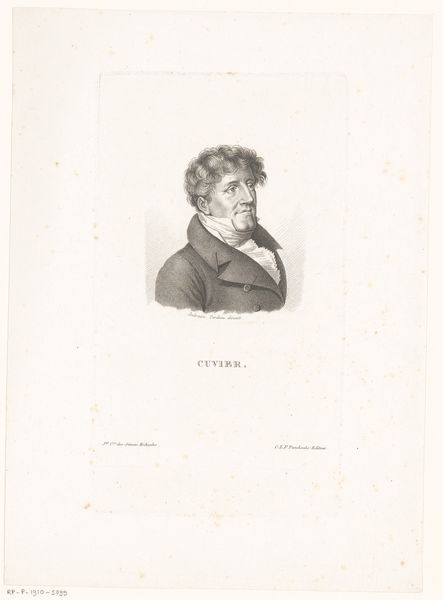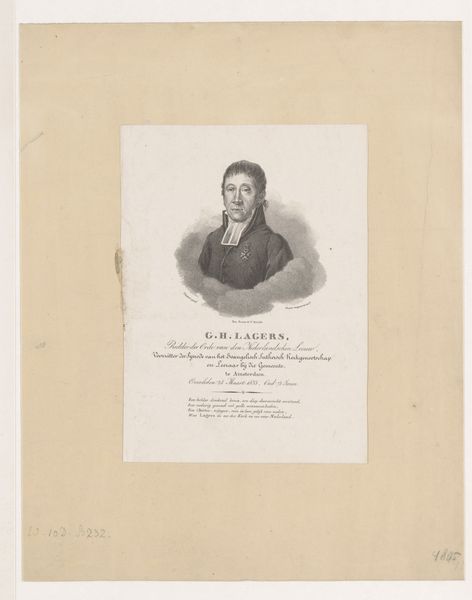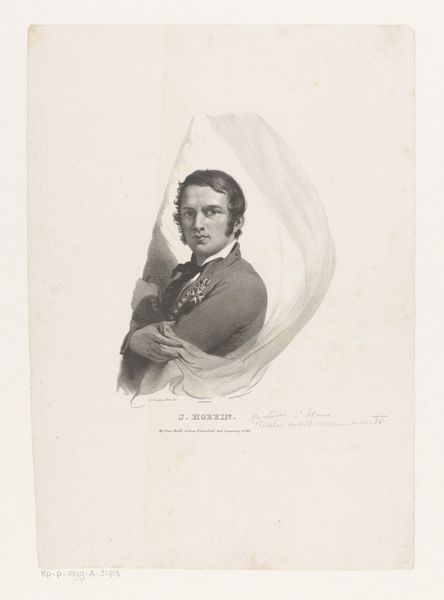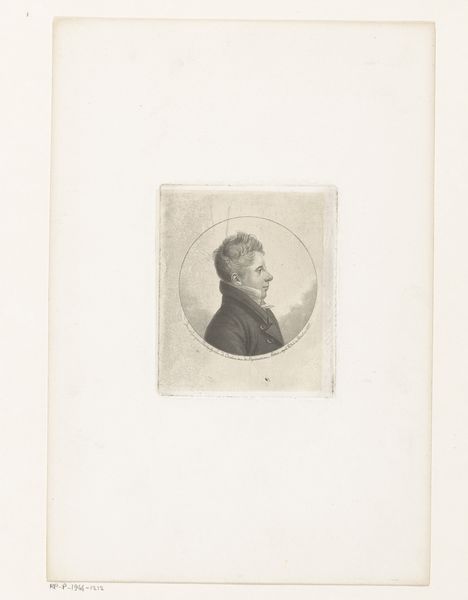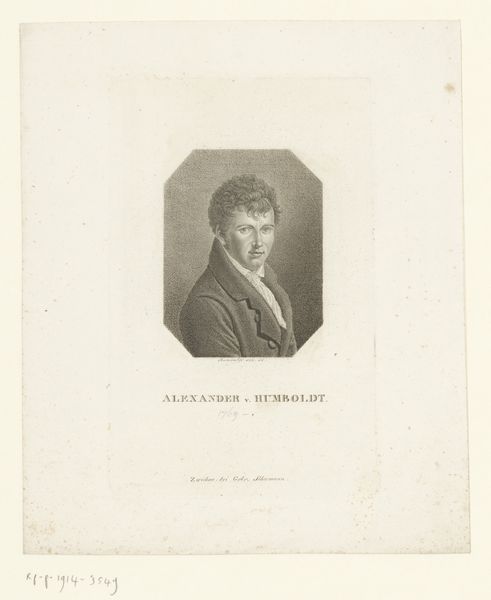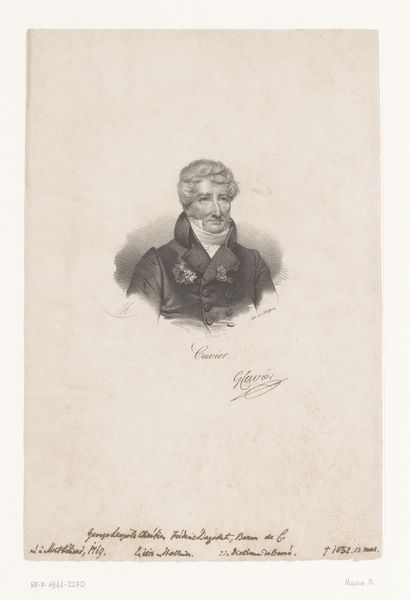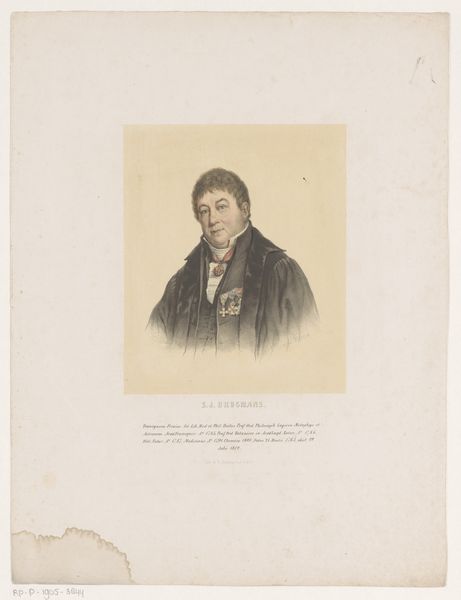
print, engraving
#
portrait
#
pencil drawn
#
neoclacissism
# print
#
old engraving style
#
form
#
line
#
engraving
#
realism
Dimensions: height 303 mm, width 236 mm
Copyright: Rijks Museum: Open Domain
Curator: The print before us, dating back to 1822, is titled "Portret van G.P. Huygens." This engraving offers a compelling study in realism within a Neoclassical framework, showcasing the subject, G.P. Huygens. Editor: My first impression is the portrait exudes an incredible lightness. He looks almost ethereal, like he's floating on a cloud made of printer's ink. There’s a subtle dynamism created by the lines. Curator: Indeed. The swirling wisps beneath Huygens could symbolize an ascension, perhaps reflecting his societal standing or an idealized representation characteristic of Neoclassical portraiture. Huygens profile provides insight on the emphasis placed upon line and form, revealing the conventions of representing powerful people during that era. The clean precise lines, although produced by engraving rather than pencil, give the appearance of having been meticulously hand-drawn. This piece offers insight into not only the subject but into 19th-century class structures. Editor: You know, it strikes me how stoic his face is. Rigid, you could almost say. Like the artist was determined to project a very particular kind of self-possession and seriousness. It seems the mood contrasts the ephemeral cloud beneath, what was that about? Maybe that cloud of possibility reflects on what Huygens did in life. What did G.P. Huygens achieve to get his floating head preserved for us here? Curator: Huygens' biography shows service in government and military endeavors and then in business, so his upward movement toward distinction feels well illustrated here. Given the historical period, we could argue the artist aims to emphasize order, rationality, and idealization, which all feed directly into Neoclassical values while making visual references to traditional forms of powerful leaders of previous historical epochs. Editor: I suppose so! The overall feeling that this portrait provokes in me… perhaps because it’s a print, there is some separation—even though I’m standing right in front of it, somehow I am pulled back to reflect and find distance to consider. Curator: In sum, this portrait really serves as an interesting artifact of its time. Viewing art works as social objects is invaluable to me, they're like historical mirrors reflecting beliefs and value-driven attitudes. Editor: Agreed. And sometimes, those historical mirrors show us more about ourselves than about the subject staring back.
Comments
No comments
Be the first to comment and join the conversation on the ultimate creative platform.
